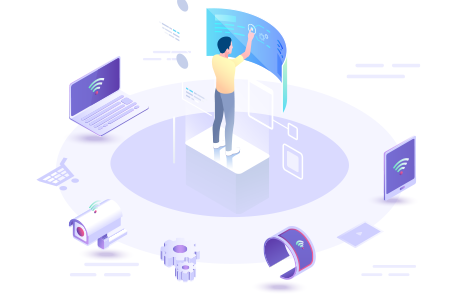On Delivering High-Quality Services
Many of us today carry smartphones wherever we go. Loaded on these devices are applications and services that offer mobility. Now that everyone is looking for convenience, there has been a proliferation of online services like ridesharing services. Having said this, just think about what this digital landscape means for IT teams responsible for providing these services. They need to be focused and proactive in order to be successful. Maintaining enterprise-class SLAs, high availability, and service quality are essential to better meet their organization’s objectives.

Issues of Legacy ITSM Tools
As you may already know, IT Service Management or ITSM refers to the optimization of service delivery to provide value to customers. But what are some of the challenges being faced by legacy IT Service Management tools? Let’s take a look at them.
With the rigidness of traditional ITSM tools (lack of customizability), it’s challenging to adjust to the needs of IT teams. There are a number of tools made for different IT processes, which creates roadblocks, silos, and a general lack of visibility across teams, creating collaboration and innovation barriers to users.
Secondly, self-service is becoming scarce or non-existent as traditional IT Service Management solutions are hard to deploy and manage.
Lastly, traditional ITSM tools cannot be integrated with other software so IT teams fail to coordinate with development teams, can’t link support issues, and have no visibility when issues are escalated.
How Jira ITSM Addresses These Issues
Having a process is important for IT Teams, and the Information Technology Infrastructure Library (ITIL) sets a standard as to how to define this. It is a common approach to IT service management, assisting individuals and organizations in implementing business change, improvement, and development with technology.
While legacy tools can be used in ITSM, it doesn’t really provide a significant value as they are not too compatible with ITIL. This prompts organizations to have an IT solution that adapts to their needs.
Jira approaches ITSM based on the requirements of the task and makes it easy for teams to collaborate in real-time. With this kind of technique, organizations can utilize a single solution where teams can work on issues that matter to them using their own workflows, data schemes, screens, SLAs, and reports while giving end-to-end visibility to IT management.
They don’t have to learn how to use new software every time; there’s no putting together modules. This allows them to logically divide their data and processes and keep their work organized.
Jira Service Management is the most collaborative service desk on the market, designed specifically for IT teams. It also puts a high emphasis on openness, so that teams can move from the "silo" mindset to keeping lines of communication open.
Since they can connect, monitor, and automate issues from inception to resolution across teams, IT and software development teams collaborate more often and solve problems faster. Everyone has complete insight into the queue, and all of the appropriate experts are able to work together to resolve problems more quickly. Consequently, developers and IT workers have more time to concentrate on improving apps and services.
Why do customers like Jira Service Management?
Jira provides the following features:
Easy to use and set up: Its clean and intuitive self-service platform makes it easy to send helpdesk tickets, search knowledge bases, and monitor progress on issues.
Integrates with Jira Software: It coordinates ITSM tickets to Jira software issues and keeps the development team and IT team connected for quick issue resolution.
Adjust to your needs: With its flexibility, it can do issue resolution, escalation, or change processes.
Final Thoughts
Digital services are a vital aspect of delivering services and those still in the traditional market have to evolve fast to dodge the risk of becoming obsolete. Traditional technologies need to be replaced, and your IT needs to keep up with new business demands. As we continue to transform services and applications digitally under the supervision of IT teams, we also see a fast pace of change that teams must manage.
Do you want to embrace greater flexibility and more collaboration in your organization? Contact us at ITarian! We customize service delivery to suit your organization’s specific needs.